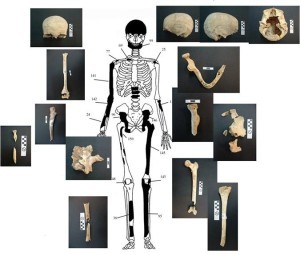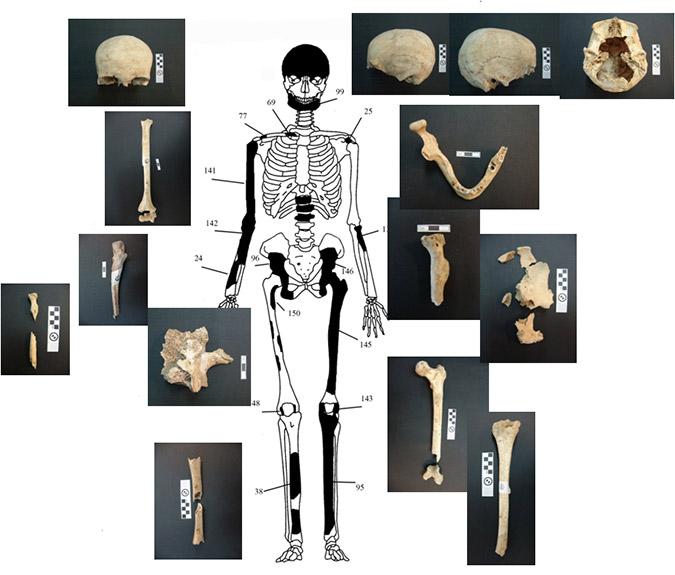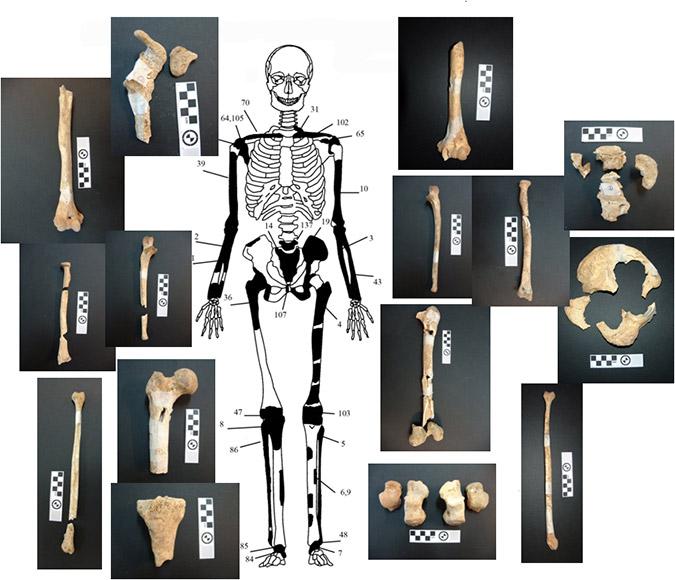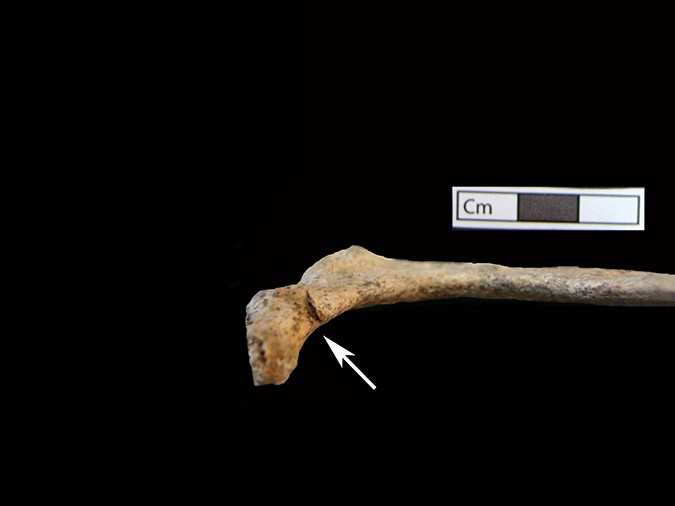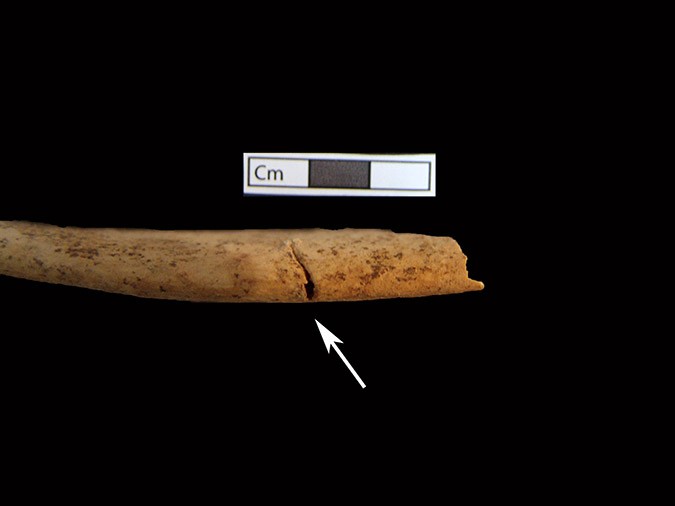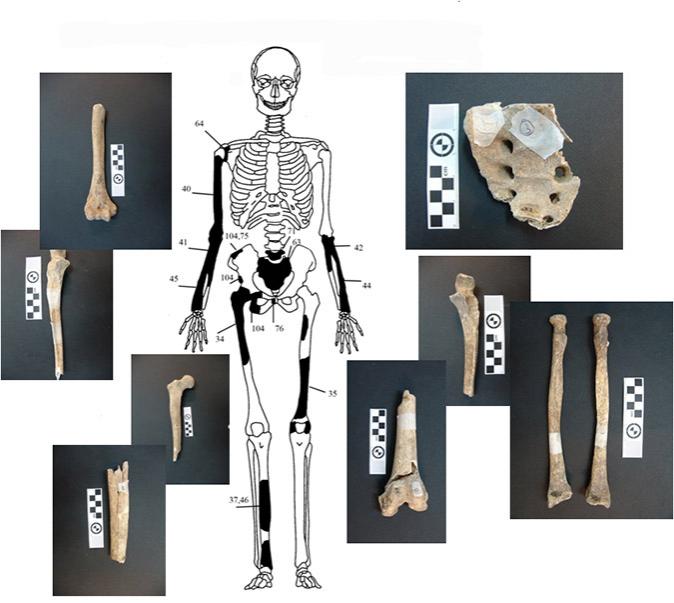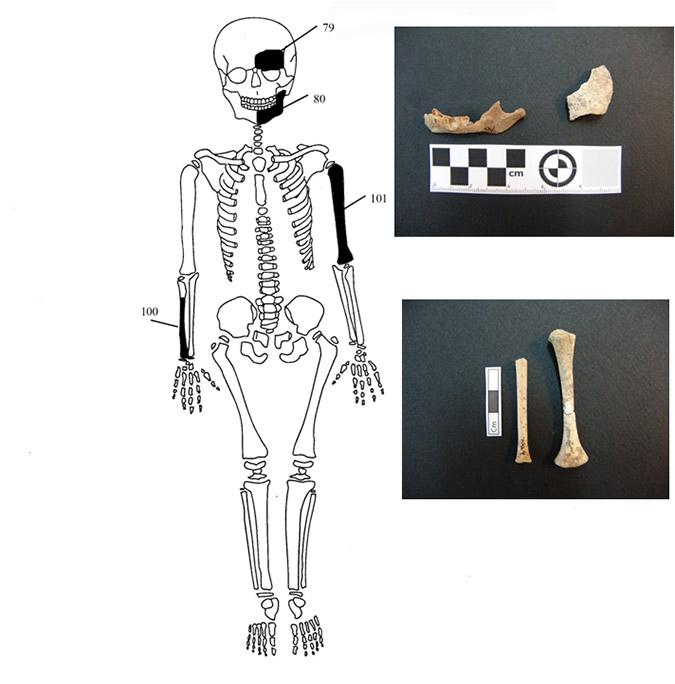The Ministry of Culture said that the remains found in the Amphipolis tomb in northern Greece consist of 550 bones, fragmented or intact. The skull was in a good condition with the lower jaw almost intact, however there 157 of the bones belong to animals, possibly horses that will be examined by a specialist.
The scientific team will continue to carry out in-depth studies of the bones following the identification of five people: A woman (60 years), two men (around 35 and 45 years), a cremated individual and a newborn infant. There is hope that the results of the upcoming DNA tests will allow researchers to piece together the sociohistorical context of the bones.
Person 1: Female, approximately 60 years
Most of the bones found 1 meter above the floor of the cist belonged to a woman, at around 1.57 meters height. Scientists were able to identify the skeletal remains as female based on the pelvic bones structure, the bones the skull, the mandible and the morphological features of the bone. The age of the woman was based on the examination of the teeth as the posterior teeth were missing. There were degenerative lesions, particularly in the spine and the presence of osteoporosis and frontal hyperostosis.
Amphipolis enthusiasts are speculating as to whether the bones of the woman could be those of Olympias. Historical texts refer to Olympias’ death as an act of stoning, however scientists did not refer to any marks indicating this. Furthermore, the queen is believed to have been buried in a vicinity near Pnyda where inscriptions had indicated the location of her tomb.
The maths also doesn’t work out for Olympias who was born at around 370 BC and died at 316 BC, whereas the woman buried in the cist grave was over 60 years of age.
Person 2: The Young Man
One of the two men is estimated at around 35 years of age and had a height estimated at 1.68 meters. He bears traces of cut marks in multiple places on his body, such as on the left upper thoracic spine, two sides and cervical vertebra. His death is believed to have been caused by a sharp instrument, possibly a knife, as no indication that medical aid had been offered to him can be distinguished. There are also signs of degenerative osteoarthritis and spondylitis.
The stab marks rule out Hephaistion, Alexander the Great’s great friend who died when he was 32 years old, because he had no such wounds even though the age matches. Another contender is Philip III Arrhidaeus who was murdered at 317 BC but later honorably buried with his wife Eurydice II Adea whose suicide had been forced by her mother.
Arrows point to cut marks:
Person 3: The older man
The older man was close to 45 years of age who is estimated to have been 1.62 meters tall. The bones were found at a position that was higher up to the first man. There is a fully healed fracture close to his right wrist. The man has signs of degenerative osteoarthritis and spondylitis.
There are speculations that Persons 2 and 3 could be Cassander’s sons as they both have degenerative osteoarthritis and spondylitis. Ruthless Cassander was the one who had Olympias murdered, however he associated himself with the Argead dynasty by marrying Alexander’s half-sister, Thessalonica. He had Alexander’s wife Roxanne and her son Alexander IV executed at around 310 BC. The general’s dynasty did not live much beyond his death as his son Philip died of natural causes and his other sons Alexander and Antipater became involved in a destructive dynastic struggle. Nonetheless, historical records are deficient in giving the exact age of his sons or details about their deaths.
Person 4: The newborn infant
The gender of the newborn infant wcould not be identified. The determination of age was based on the length and width of the left humerus and left mandible.
Person 5: Burnt individual
There were only a few burnt fragments to represent the fifth person who is of unknown age and sex but are believed to belong to an adult individual. The bones have been influenced by the high temperatures during the process of its burning.
Questions:
So far the bones raise more questions than they answer, adding pieces to the puzzle rather than giving answers.
* What relationship did the five people have between themselves? Were they family members? (Family mausolea weren’t the norm at the time).
* Were there bones together as a result of vandalism at a later date?
* Why was one of the people cremated?
* Were the bone fragments there as the result of a Macedonian royal burial?
Ask me anything
Explore related questions
